

CarExpert.com.au
The CarExpert team's favourite cars of 2025
3 Days Ago
Where expert car reviews meet expert car buying – CarExpert gives you trusted advice, personalised service and real savings on your next new car.
The all-new BMW 5 Series is here – and for the first time there’s an all-electric one.
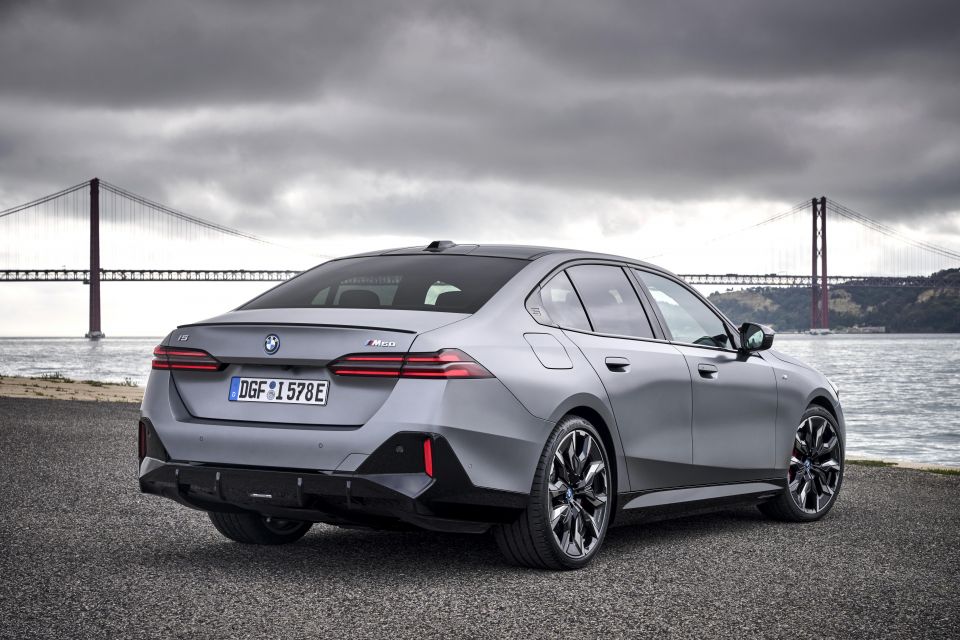
Now in its eighth generation, the “world’s most successful business sedan” offers electrification across the board from 48V mild-hybrid (MHEV) to plug-in hybrid (PHEV) and battery electric (BEV).
As with its predecessors BMW claims the 5 Series “offers the comfort of a 7 Series with the sportiness of a 3 Series“.
The headline act of the eighth-generation 5 Series line-up is the 2024 BMW i5, the first all-electric version of BMW’s large sports luxury sedan.
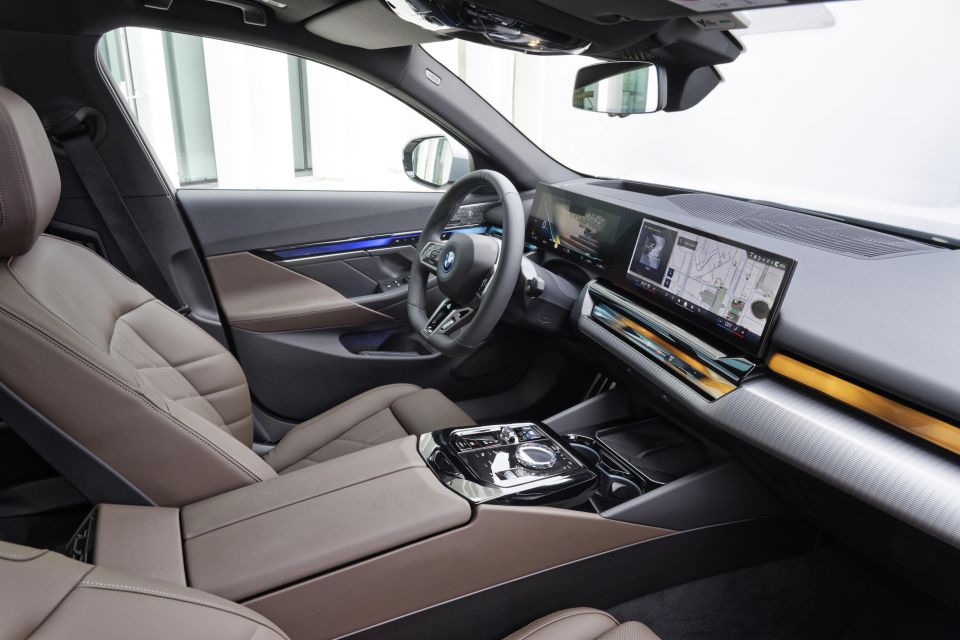
Available in two variants at launch, the i5 offers single-motor and M-fettled dual-motor electric drivetrains. Both will be landing in Australia before year’s end.
We joined the international media launch in Lisbon, Portugal, to test BMW’s new electric 5 Series ahead of its local introduction in the latter stages of 2023.
Two variants of the i5 will be offered in Australia from launch – the eDrive40 and the M60 xDrive.
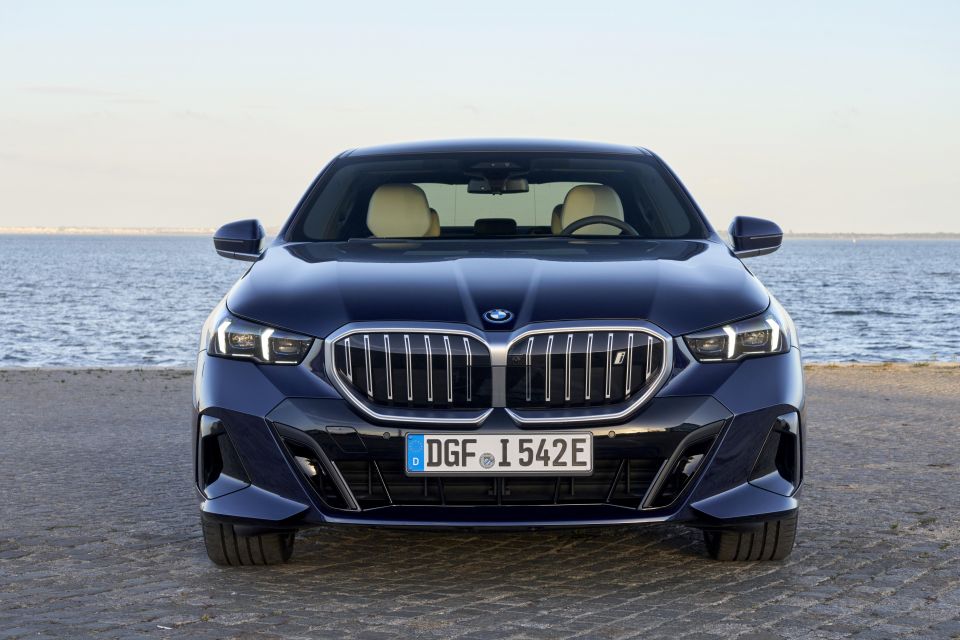
While the 2024 BMW 5 Series line-up will open with the $114,900 520i, the i5 kicks off from $155,900 plus on-road costs for the eDrive40 and tops out at $215,900 before on-roads for the M60 xDrive flagship.
That sees the eDrive40 line up against the Mercedes-Benz EQE 350 4MATIC ($154,900), and despite being single-motor RWD only it offers more power, performance, and range than its dual-motor German rival.
Meanwhile, the M60 xDrive aligns with the $214,900 Mercedes-AMG EQE 53 4MATIC+ on price and performance, and while claimed 0-100 performance is about half a second off the AMG, the BMW quotes 80km better range and a higher 205kW DC charging capacity (versus 170kW).
Other rivals include the Porsche Taycan (from $165,700) and the Audi e-tron GT (from $178,875).
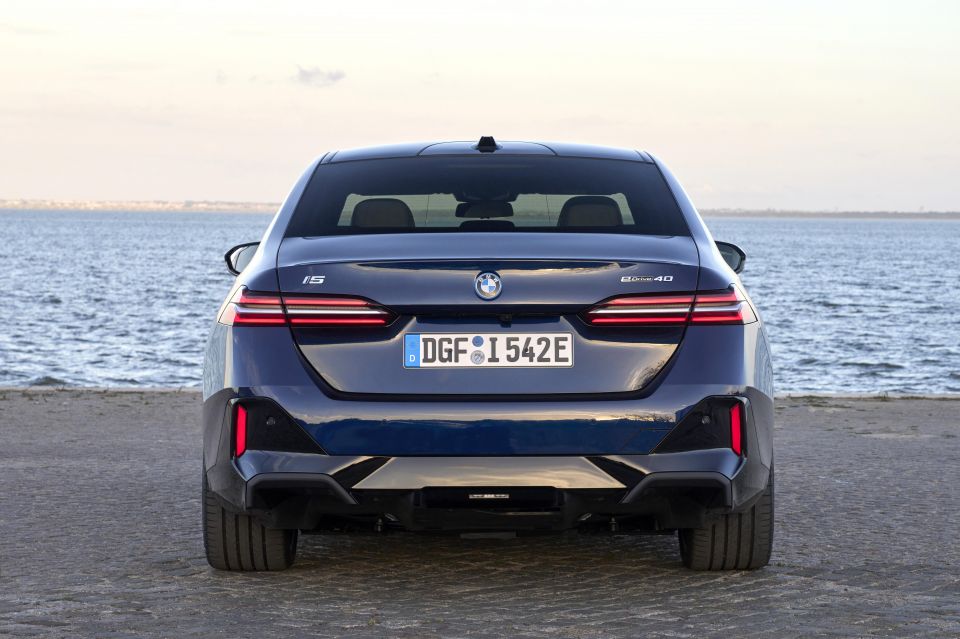
2024 BMW 5 Series pricing:
Prices exclude on-road costs
Buy your new car without the stress. It's fast, simple and completely free.

Great service from Travis and team, second time I have used this business would not hesitate to recommend them to anyone
Craig C.
Purchased a Ford Ranger in Sunshine Coast, QLD
CarExpert helped Craig save thousands on his Ford Ranger, now let us save you on your next new car.
Find a dealThe new BMW 5 Series is the first model ever in the brand’s history to “feature a fully vegan interior as standard”.
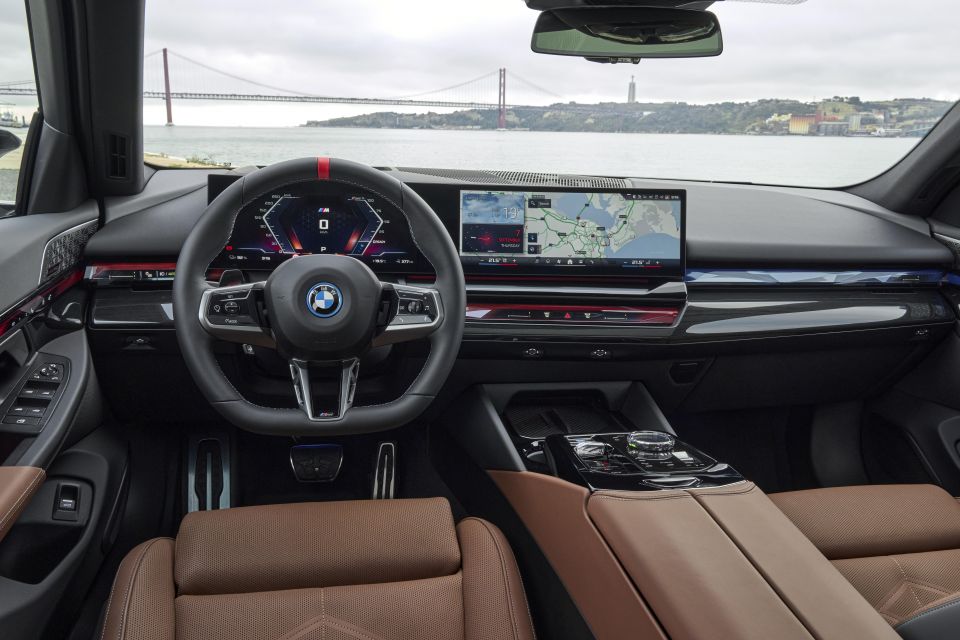
The new 5 Series and i5 blend new-age tech and displays with some of the more recognisable cabin elements we’ve come to expect from the Bavarian marque, with excellent material and build quality throughout.
The standard ‘Veganza’ leather-like trim has slowly been rolling out in the brand’s latest models – like the X1 and iX1, for example – and the material used in the i5 looks and feels like smooth, supple cow hide.
Australian-delivered i5s will come with the higher-grade ‘Merino’ BMW Individual leather as standard, which is right up there with Nappa-grade leather, though the entry-level 520i will come equipped with the vegan-friendly stuff.
Beyond the upholstery, there’s a high ratio of soft-touch surfaces, a lovely solidity to the switches and controls which also have nice clicky actions, and the seats themselves are supremely comfortable for longer journeys.
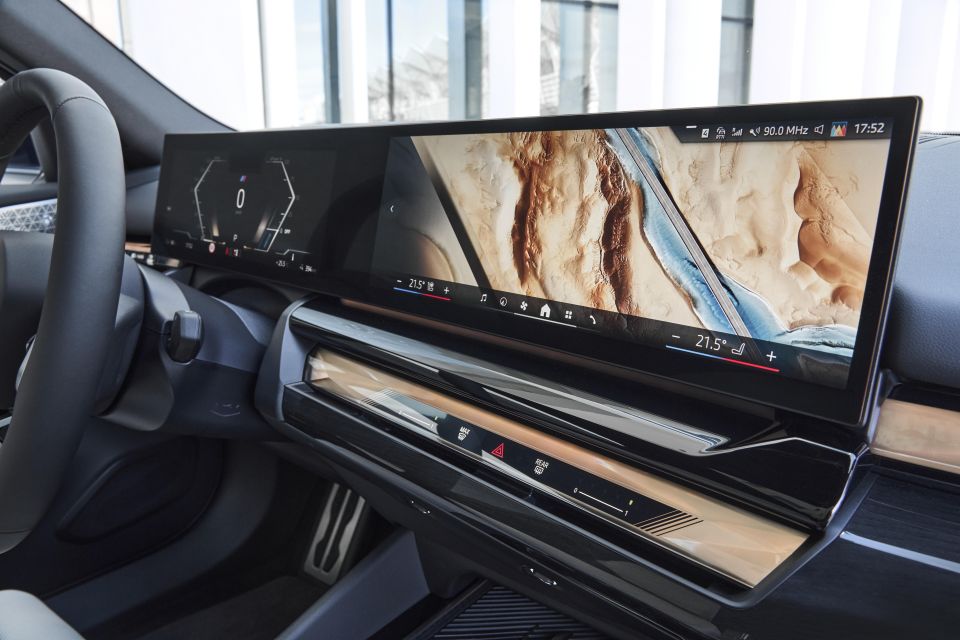
Once seated, you’re quickly drawn to the conjoined displays jutting out of the dashboard ahead of the driver. The 12.3-inch driver’s display and 14.9-inch curved touchscreen for the infotainment system are familiar to anyone that has sat in a recent BMW, though it’s running the latest Operating System 8.5 software.
I’ve complained in the past about OS 8.0 being quite convoluted and a step back in user-friendliness, and the latest update definitely feels like a step in the right direction – though I wouldn’t say it’s as close to perfect as the older generation of iDrive was.
Like I mentioned in my review of the i7 M70, which also gets this newer system from launch, I didn’t spend too much time flicking through the display, but the revised home screen with customisable widgets and simpler menus is a noticeable improvement.
The short time with the i5 which was focused on driving on foreign roads, we also didn’t get to really test the 17-speaker Bowers & Wilkins premium audio system that will be standard on the i5 in Australia. If the brand’s other systems in Volvo products and the i7 are anything to go by however, it should be spectacular.
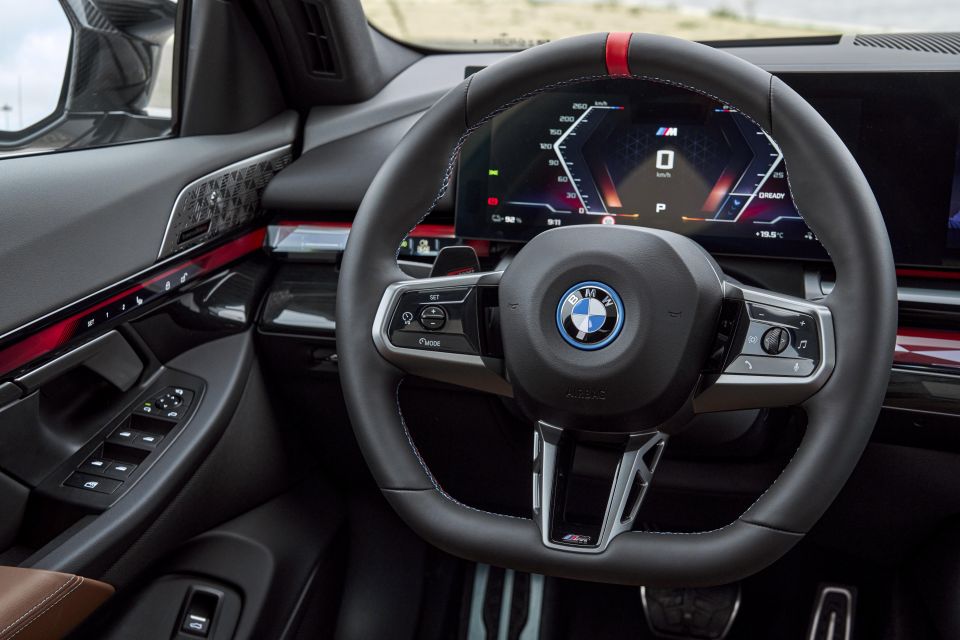
The driver is faced with a sexy steering wheel that is rolling out across BMW’s latest products, which I feel is a perfect blend of classic and contemporary design.
It has a thick rim trimmed in smooth, supple leather that looks and feels high-end. The glossy multifunction switchgear looks good but is prone to smudges, and the pared back approach to controls means the distance setting for the adaptive cruise control is annoyingly relegated to the touchscreen – otherwise, it’s good.
You can toggle various views and layouts for both the driver cluster and head-up displays, though adjusting the height and brightness is done via the central touchscreen. Once you set and forget though, you won’t need to fiddle around.
Also worth noting is that the touch-only climate controls are a dedicated action bar at the base of the 14.9-inch Curved Display, and the clearly labelled virtual buttons are easy enough to use – though BMW’s physical climate controls of old are hard to beat.
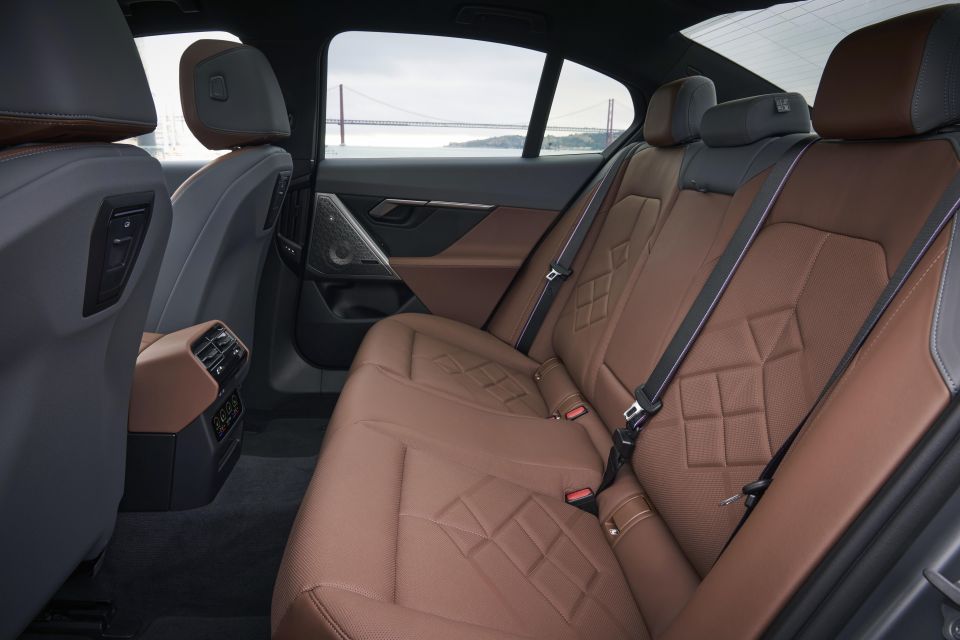
Given the 5 Series and i5’s segment, the second row is pretty important too. Thankfully, there’s a good amount of space for taller adults behind taller adults, and the floor-mounted battery doesn’t have you in a noticeably knees-up seating position.
Annoyingly there’s a considerable driveline hump in the floor – a product of the shared platform with the petrol, diesel and plug-in hybrid models – but the deep, wide footwells on either side mean carrying a third passenger in the middle won’t result in an endless game of footsies.
Oddly there are no map pockets, though there is a fold-down centre armrest with cupholders, bottle holders in the doors, directional rear air vents with a digital climate control panel (part of the optional four-zone climate control system), as well as the requisite ISOFIX anchors on the outer seats and top-tether points across all three rear positions.
A total of four USB-C charge ports are located in the rear; two under the rear air vents and one in each front seat back, with preparation for device mounts and the like in BMW’s extensive accessories catalogue.
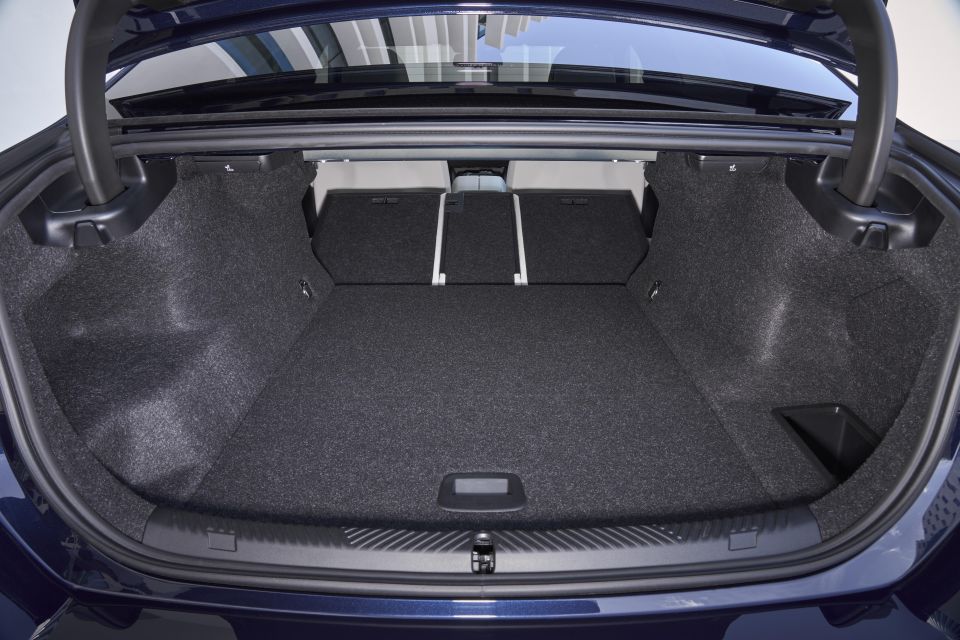
The i5 variants lose 30 litres of boot space to the 520i – at least in Australian specification – quoting 490 litres of capacity.
All versions get a tyre repair kit in place of a spare wheel.
Two i5 drivetrain variants will be available in Australia, one single-motor and one dual-motor.
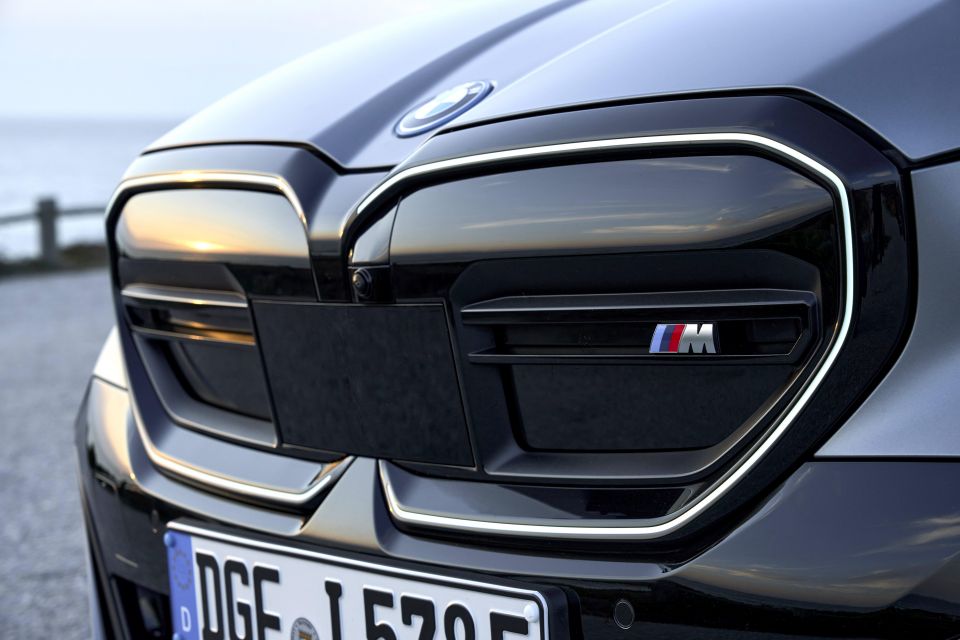
The i5 eDrive40 is powered by a rear-mounted single electric motor producing 250kW and 430Nm. This is mated to an 84kW lithium-ion battery pack, with BMW claiming a 6.0-second 0-100km/h sprint.
The flagship i5 M60 xDrive is powered by dual-motor electric drivetrain with system outputs of 442kW and 820Nm. This is also mated to an 84kWh battery pack, with BMW claiming it can do the 0-100km/h sprint in 3.8 seconds.
The BMW i5 eDrive40 offers a claimed WLTP range of 582km, whereas the i5 M60 xDrive quotes 516km. European specs show consumption of 18.9-15.9kWh/100km for the eDrive40, and 20.6-18.2kWh/100km for the M60 xDrive, the higher values of each achieving the quoted range for Australian models.
The i5 has a maximum AC charging rate of up to 22kW, and a maximum DC charging rate of up to 205kW. BMW claims it can charge from 10 to 80 per cent on a “high-speed charger in around 30 minutes”.
All BMW i5 owners also receive a complimentary five-year subscription to the Chargefox public charger network in Australia.
We sampled the eDrive40 and M60 xDrive over consecutive days on the roads surrounding Lisbon, Portugal’s capital.
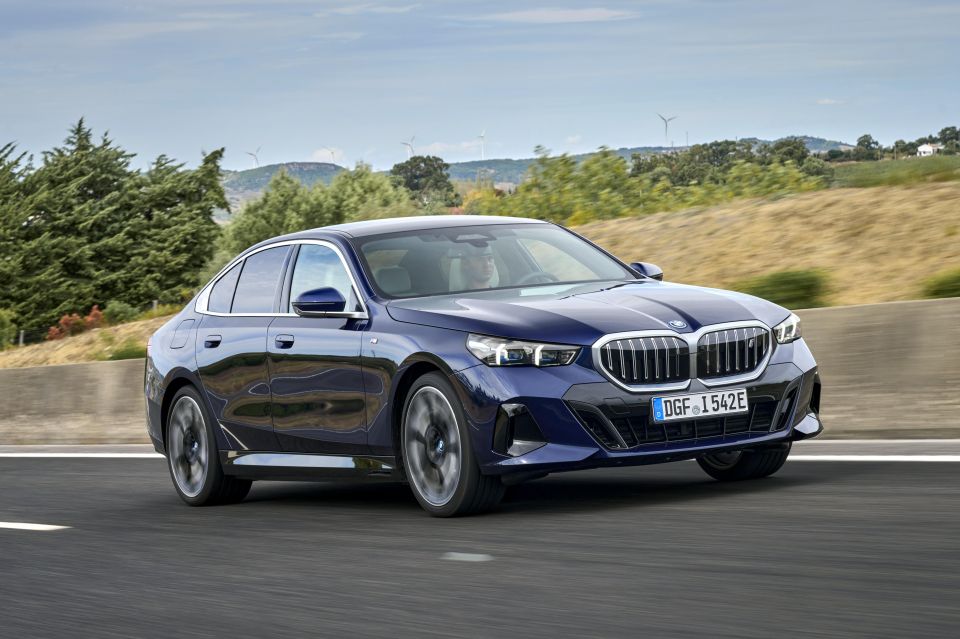
Day 1 was spent with the “entry level” i5 eDrive40, something of a modern electrified take on the 540i – which has been a V8 as well as a turbocharged inline six in the past.
Despite having just a single electric motor on the rear axle, the 250kW/430Nm drive unit gives the ‘base’ i5 more than enough pep for most scenarios – it’s even quicker than the dual-motor EQE 350 4MATIC.
The classic rear-drive balance and the immediacy of the e-motor’s torque make acceleration brisk and responsive, with the quoted 6.0-second 0-100 time in the same realm as hot hatches.
It feels as quick too. Dashing onto Portugal’s short freeway on-ramps with signed 120km/h speed limits were a breeze, and the eDrive40 offered plenty of punch for the winding B-roads approaching the seaside town of São Lourenço. It’s a beautifully balanced and well-rounded drivetrain.

The BMW IconicSounds Electric program with engine ‘notes’ by composer Hans Zimmer won’t be to all tastes, but I enjoyed the synthesised powertrain noises compared to those offered by Mercedes.
I was also perfectly happy with having them all turned off, as the i5’s excellent sound insulation means there’s little in the way of road and wind noise entering the cabin even at 120km/h on Lisbon’s freeways.
We even got to trial the i5’s new Highway Assistant, which is a hands-off driving mode that is considered ‘Level 2+’ as it still requires full driver attention.
Building on the existing Steering and Lane Control Assistant, the i5’s Highway Assistant combines adaptive cruise control and lane centring functions with the ability to drive and change lanes without holding the steering wheel.
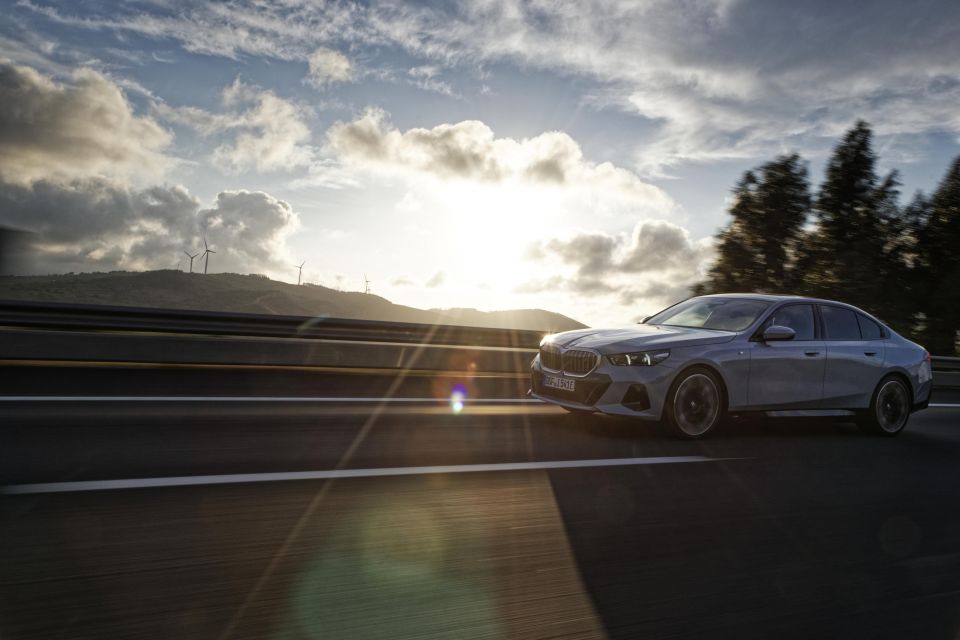
Where expert car reviews meet expert car buying – CarExpert gives you trusted advice, personalised service and real savings on your next new car.
For the time being this system will only be fitted to vehicles sold in markets with legislation allowing hands-off driving – Germany and the USA at launch – but we sampled it on the Vasco da Gama Bridge, a 17km cable-stayed bridge that spans the Tagus River.
The driver monitoring system constantly reads the driver’s eyes using the cluster-mounted cameras to ensure they’re focused on the road ahead, and it will also perform overtakes using eye recognition.
If you come up behind a vehicle going slower than the set speed, the i5 will prompt you with a message to look at the mirror in the direction of the desired lane. Look over at the mirror, and the vehicle indicates and merges into the overtaking lane when it’s safe using the blind-spot monitor.
Once you’ve overtaken, the car will then prompt you to then merge back into the lane you started in – no fast-lane hogging here, Australian drivers take note. It actually works!
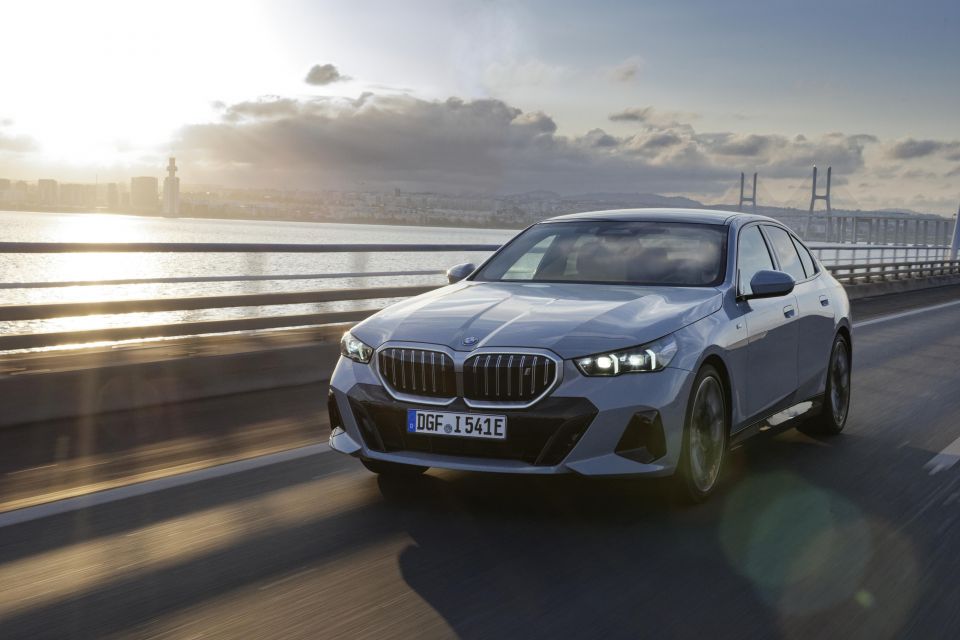
From a ride and handling perspective, the eDrive40 has a pretty light feel through the driver controls in their standard settings which seems more in keeping with its more comfortable all-rounder pitch.
The light steering is accurate enough with good response, but it’s not quite as dialled in as the M-fettled stuff nor some BMWs of old.
All 5 Series models globally get Variable Sport Steering as standard, which weights up at higher speeds and dials down weight in town, but Australian i5 variants also pick up rear-wheel steering.
Body control is good with roll in corners kept to a relative minimum, and there’s heaps of grip. It really doesn’t feel as big as its dimensions suggest – remember this is a 5060mm-long, 1900mm-wide limo.
In town, on the highway, or up a winding B-road, the adaptive suspension strikes an excellent balance between comfort and body control. It was comfortable over all surfaces, made more impressive given our test cars were riding on the optional 21-inch alloy wheels (20s are standard).
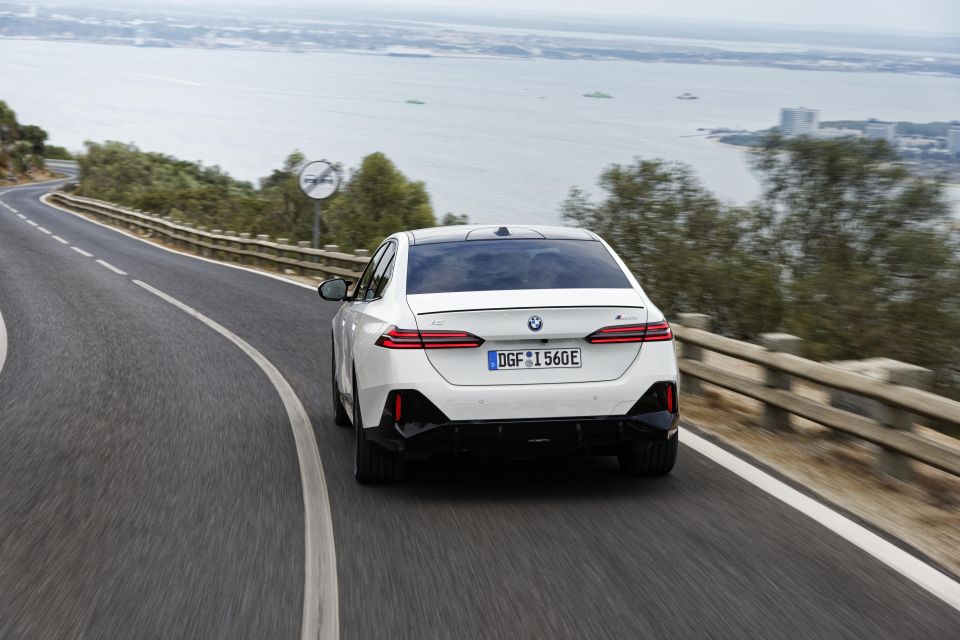
Day 2 was spent in between the i5 M60 xDrive and the i7 M70 xDrive – obviously we’ve already covered the latter, so we’re focusing on the former here.
The M Performance version of the electric 5 Series acts much like the eDrive40 in normal driving, with strong torque from standstill and a near-silent cabin at speed.
We really spotted the differences when driving over the winding roads on the cliffs approaching Setúbal, which really showcased the dynamics.
The M60 gets Adaptive M Suspension Professional, with an M-tuned adaptive damping and rear-wheel steer setup, as well as active roll stabilisation.
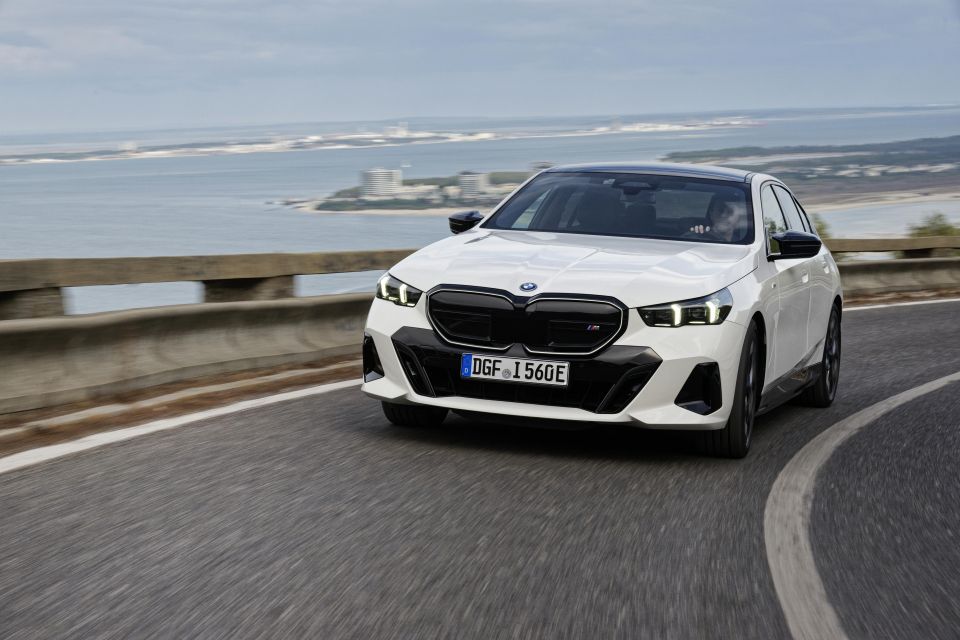
Driving the M60 in anger was incredible. It stayed flat through tight hairpins on Portugal’s coastal cliffs, and there’s so much performance under foot that warping towards the horizon becomes quite addictive.
While it quotes a 0.1s slower 0-100 time than the i7 M70, the i5 M60 feels just as quick if not more athletic, and seems to keep powering on even as the speeds rise.
The fact all 820Nm is available from the moment your right foot hits the pedal never quite feels normal, as the M60 accelerates with such face-melting ferocity at full throttle it feels like it’s going through one of those hypergates from Star Wars – and the IconicSounds Electric gives you a matching soundtrack.
We pushed it pretty hard, and it never came unstuck. Even better, the tighter tuning of the steering and throttle makes you feel more connected and more in line with BMW’s Ultimate Driving Machine mantra.
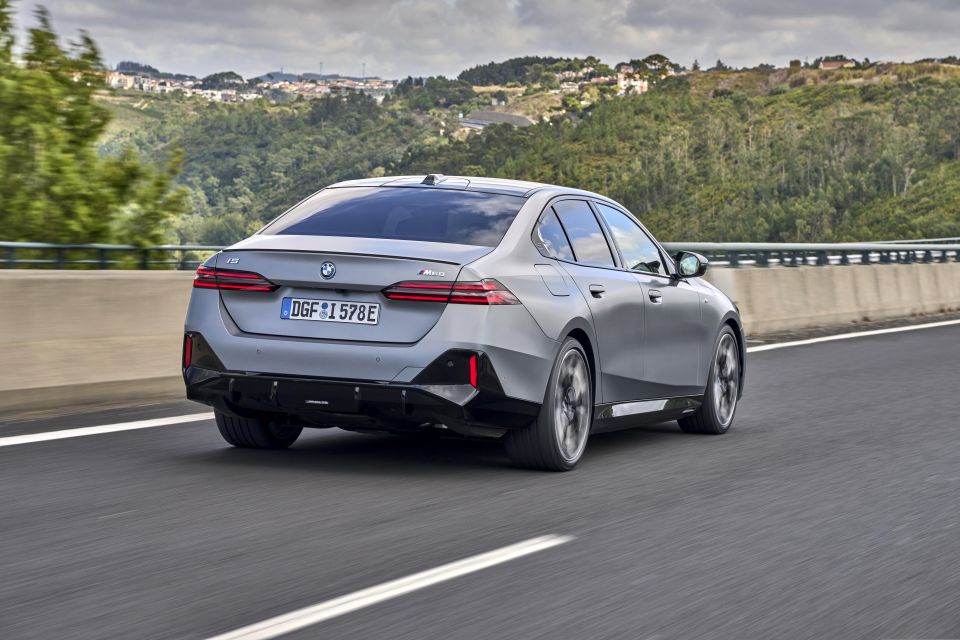
Compared to the Mercedes-AMG EQE 53 I drove in France last year, the i5 M60 feels more resolved and adept through technical stretches of road, where the AMG felt better suited to blasting down the Autobahn with its solid heft.
Even once we hit the transit sections of the launch drive, the M60 remained as beautifully cosseting and refined as the eDrive40, if with a touch more tyre noise as the vehicles we tested were fitted with performance tyres.
It retains all of the 40’s driver assistance suite too, meaning it can help take the load off longer journeys. Really, this thing was hard to fault.
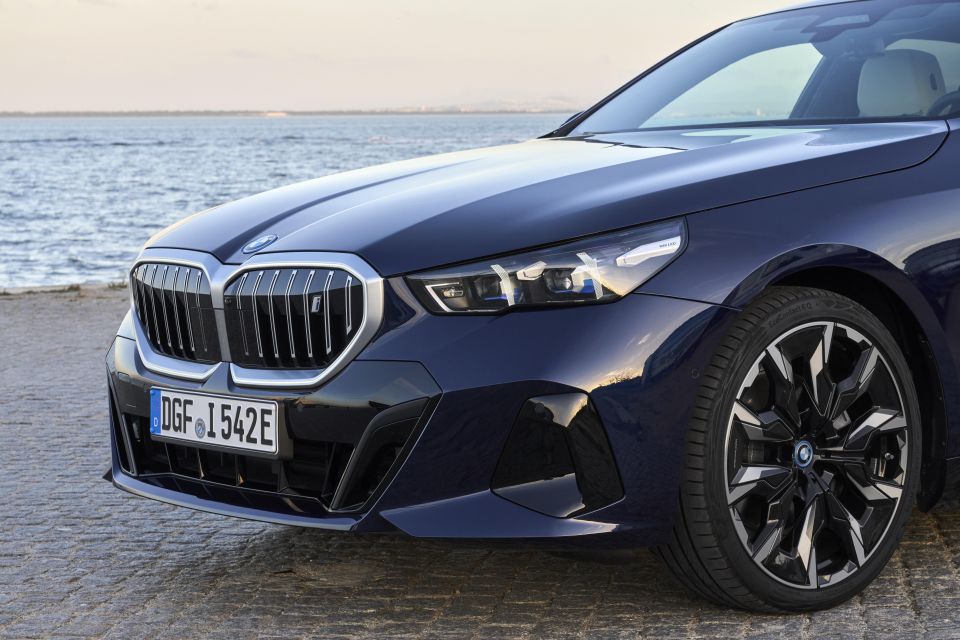

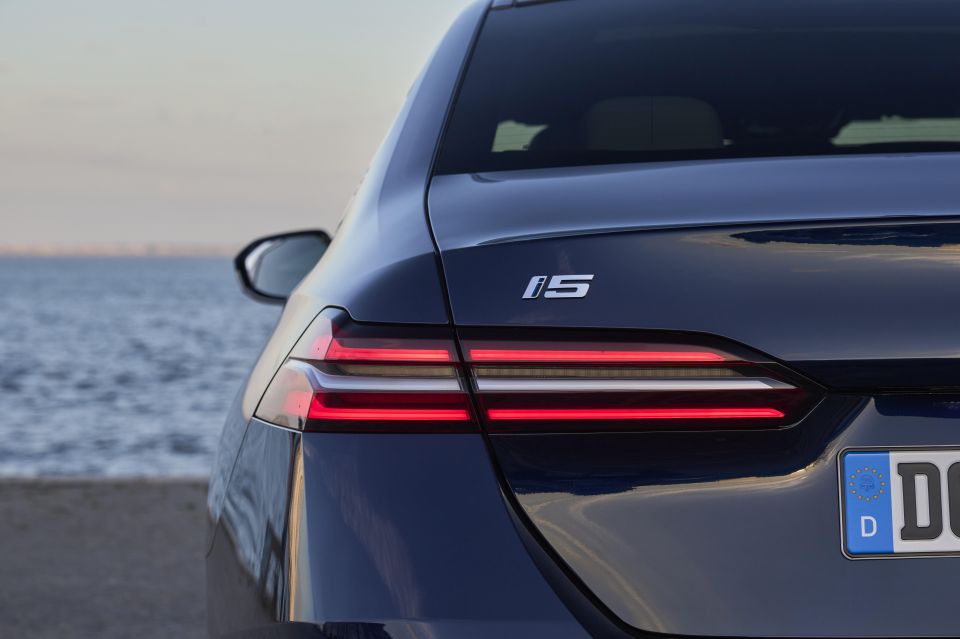
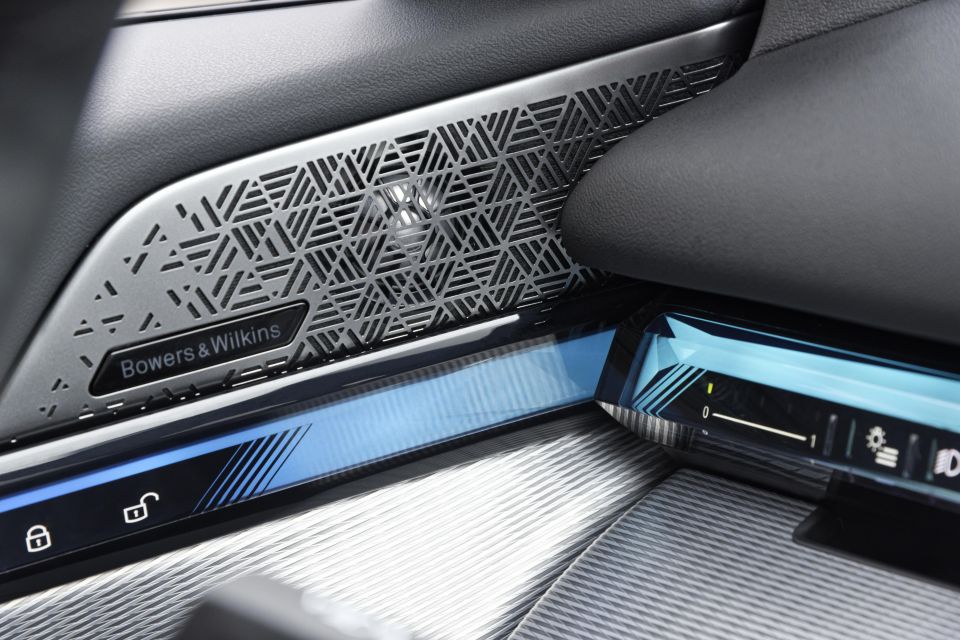
520i highlights:
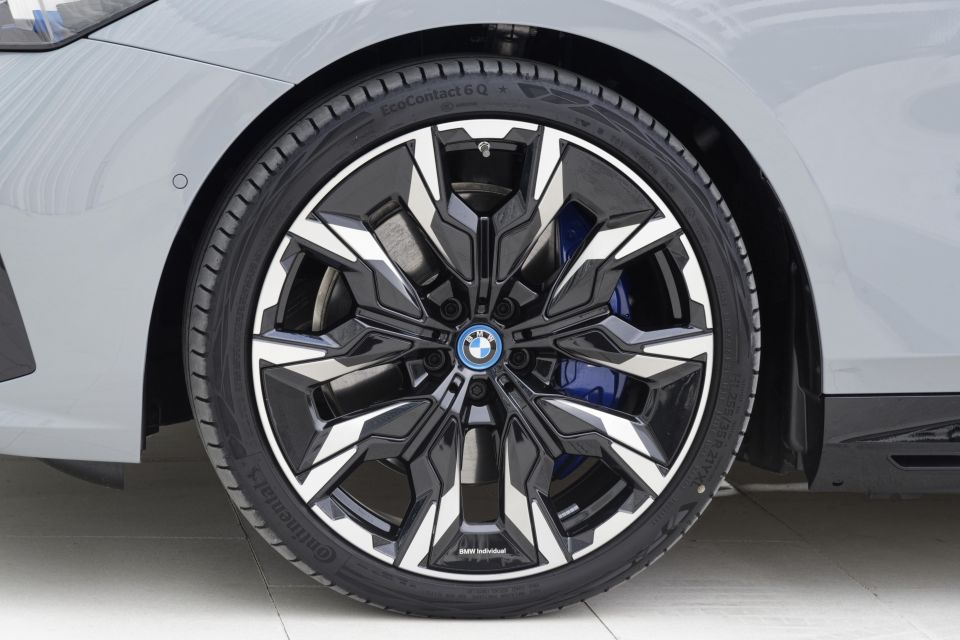
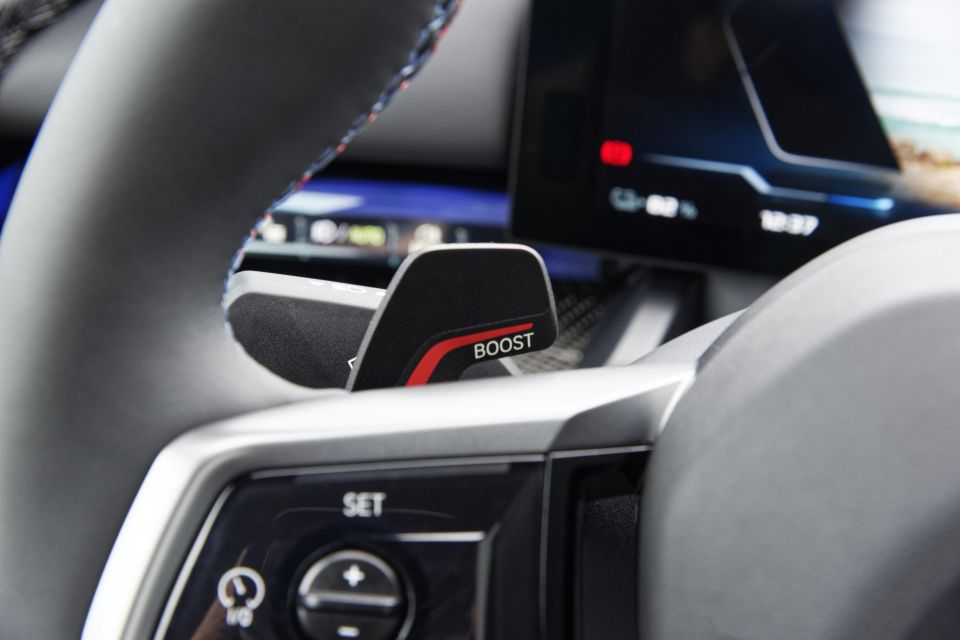
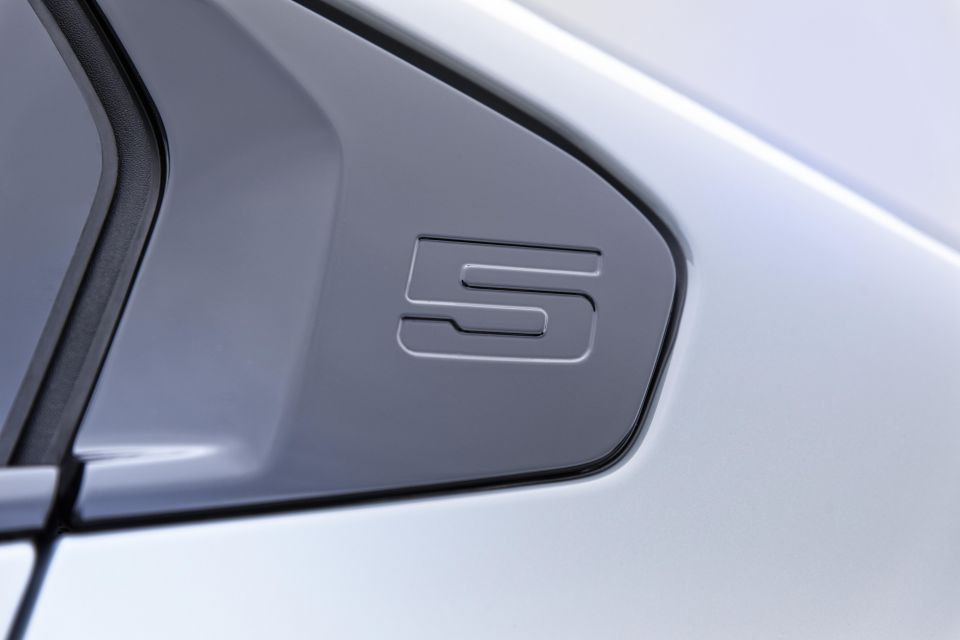
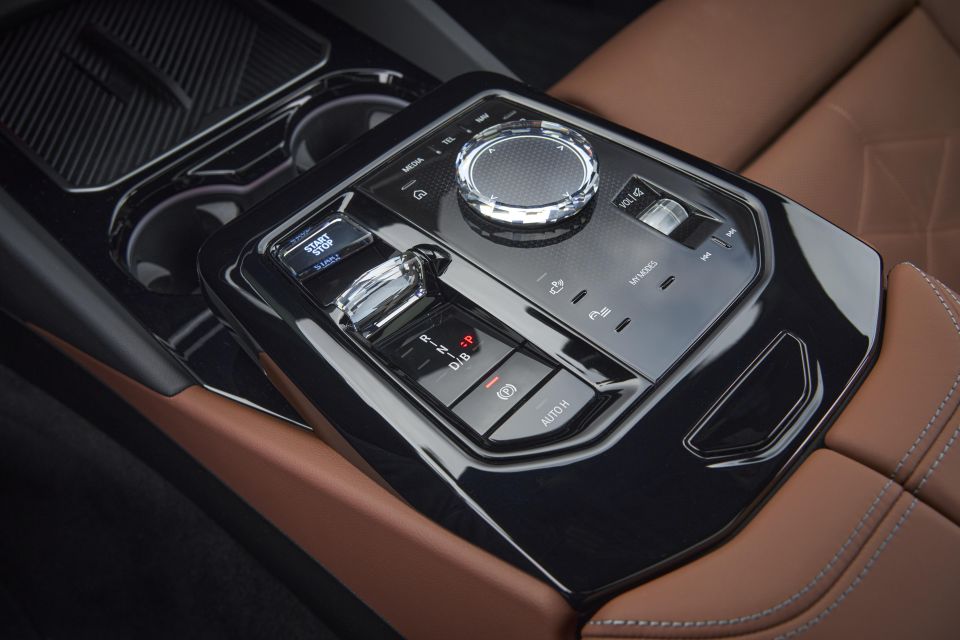
i5 eDrive40 adds:
i5 M60 xDrive adds:
The latest 5 Series has yet to be crash tested by ANCAP or Euro NCAP.
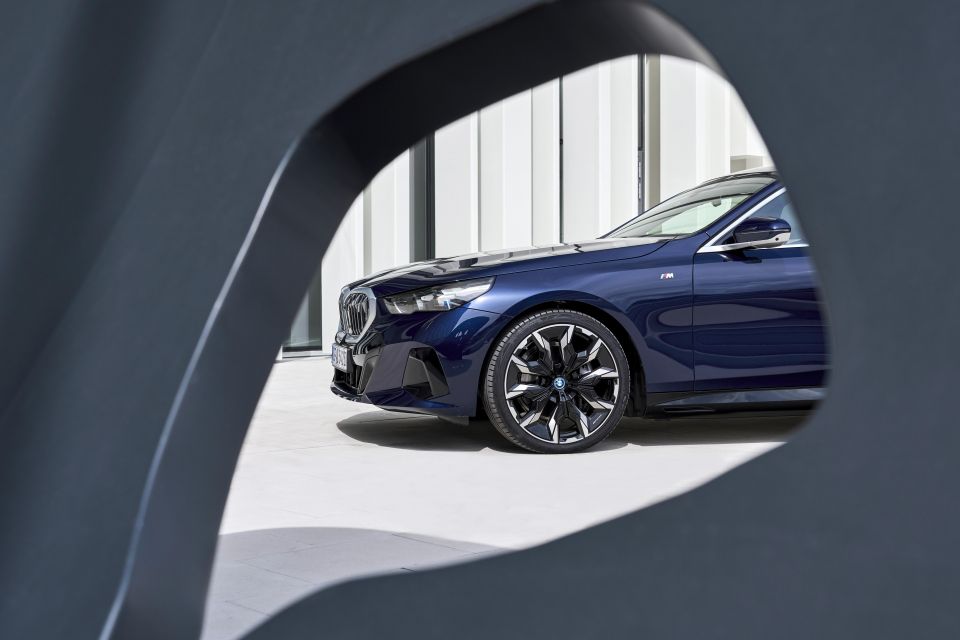
Standard safety equipment includes:
There are also a range of connected services that can be accessed using the My BMW smartphone app and BMW Digital Key Plus, including a remote parking function.
BMW Australia has only confirmed preliminary specifications for the Australian market, so expect the above list to grow substantially once the full list of local features and technologies are detailed.
Like the wider BMW range in Australia, the i5 (and 5 Series) will be covered by a five-year, unlimited-kilometre warranty, with the high-voltage battery in EV models warranted for eight years or 160,000 kilometres.
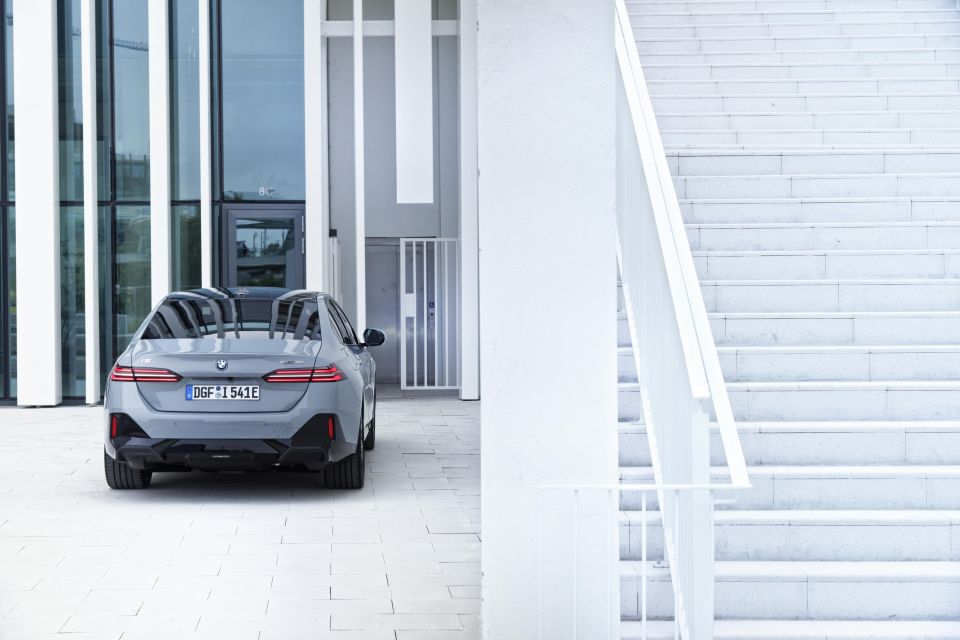
Service pricing for the new-generation 5 Series and i5 range hasn’t been confirmed yet, though the previous 5 Series was available with a $2400 Service Inclusive Basic package which covered the first five years or 80,000km of scheduled maintenance.
Australian buyers will receive a complementary five-year unlimited subscription to the Chargefox public charger network though, which is good news.
After not feeling particularly moved by the new 5er’s design in launch imagery, I came away from this international launch drive smitten by the electric ‘business sedan’.

Few EVs have really stirred my soul like this. The BMW i5 seems to really cater to those wanting something that looks and feels like a normal car – a normal BMW – with the usual combustion drivetrain underneath swapped for electric motors and a big battery.
Despite being over 5.0m long and weighing over 2.0 tonnes in both specifications, the i5 feels every bit a BMW as you’d expect, with engaging dynamics and athletic performance wrapped in a luxurious cabin perfect for commuting in the city or cruising between capitals.
Even better, it offers a long claimed driving range, an improved take on BMW’s infotainment software, and has plenty of space for the family or clients and their luggage – if you need more, the next-generation 5 Series Touring will offer i5 versions globally from next year, but we don’t know if it’ll be coming to Australia just yet. Fingers crossed.

The eDrive40 is more than enough i5 for most people. It offers a great balance of performance, dynamics, comfort and luxury relative to the segment.
The M60 xDrive is silly fun, and a feat of engineering, but at $215,000 it’s the most expensive non-M5 we’ve seen in a long time, and you’ll never fully experience its potential unless you take it to the Autobahn or the track – only one of those options is available to you Down Under.
All told, we’ll need to spend some time with the i5 and 5 Series when they land in Australia to see whether the promising package on European roads translates to local tarmac, given our very unique set of road surfaces and weather conditions – but I’m expecting very good things.
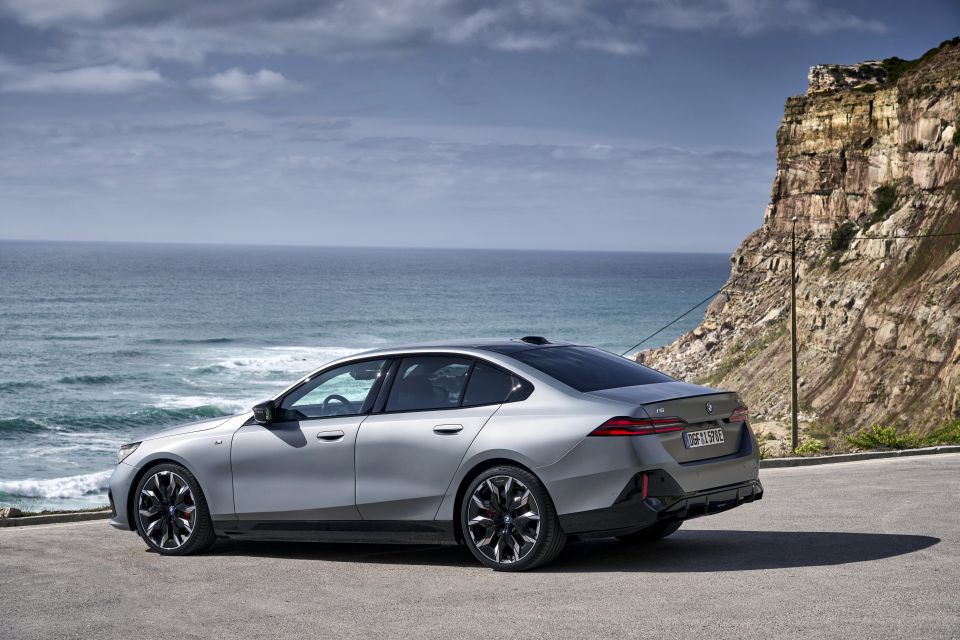
Click the images for the full gallery
MORE: Everything BMW i5
Where expert car reviews meet expert car buying – CarExpert gives you trusted advice, personalised service and real savings on your next new car.
James Wong is an automotive journalist and former PR consultant, recognised among Australia’s most prolific motoring writers.


CarExpert.com.au
3 Days Ago


Max Davies
10 Days Ago
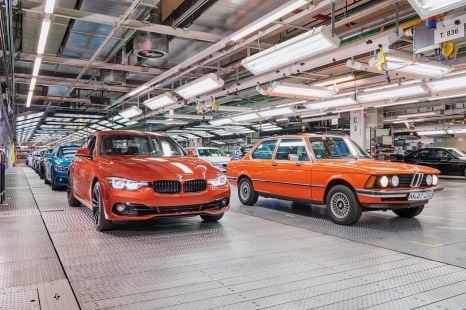

Ben Zachariah
12 Days Ago
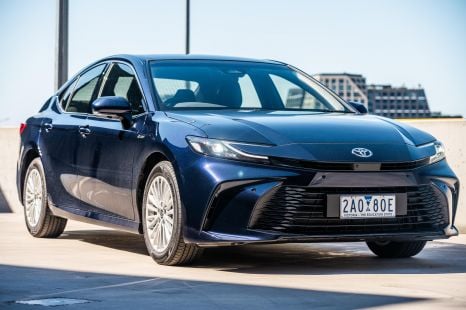

William Stopford
2 Months Ago
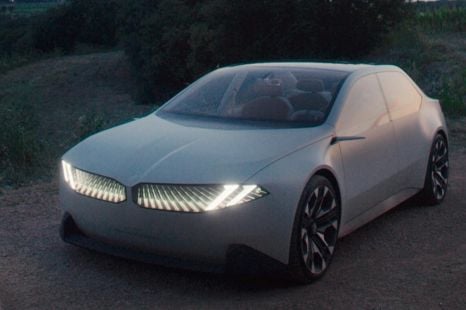

Damion Smy
2 Months Ago
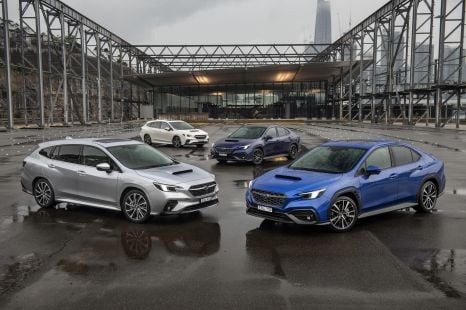

Max Davies
2 Months Ago